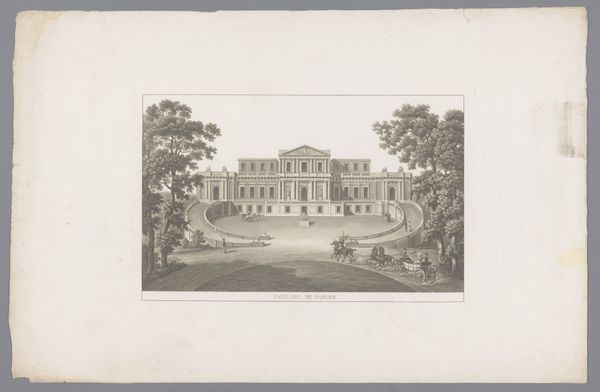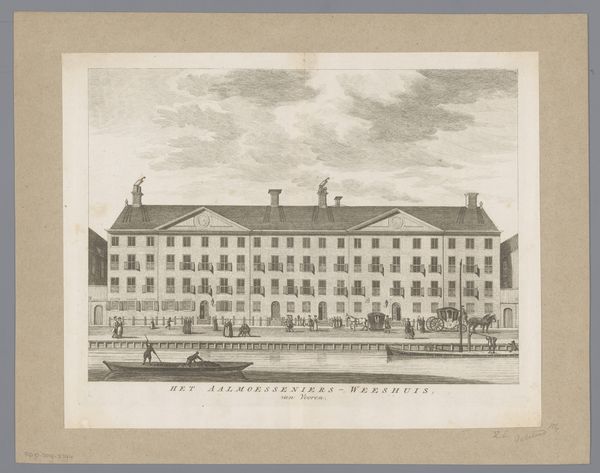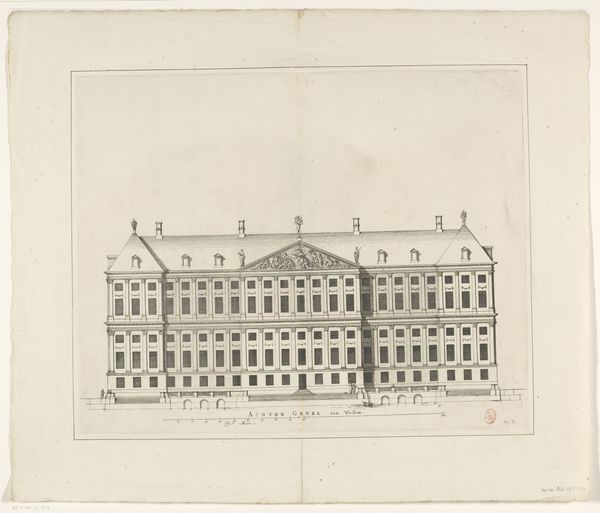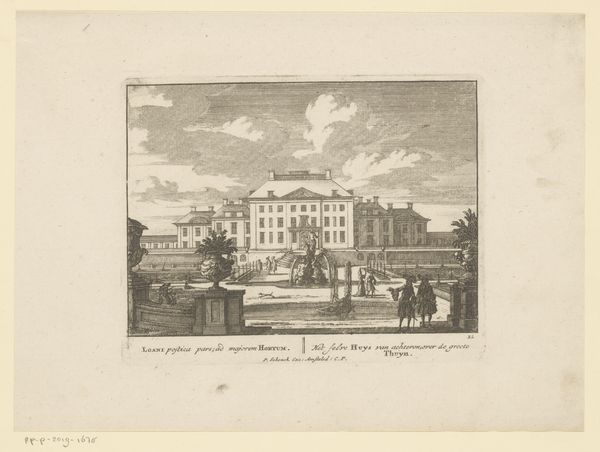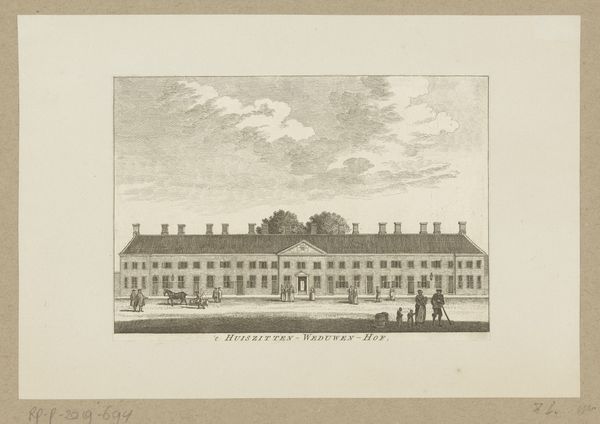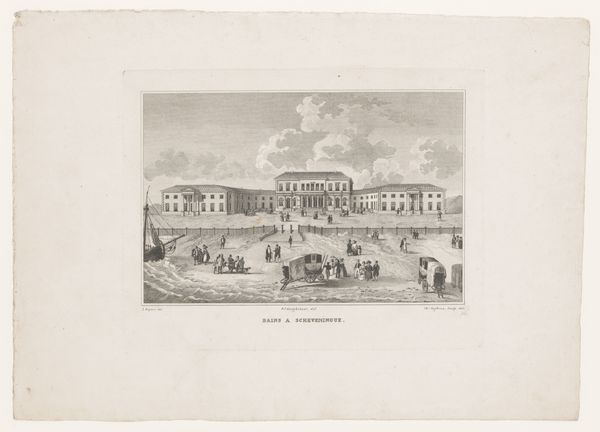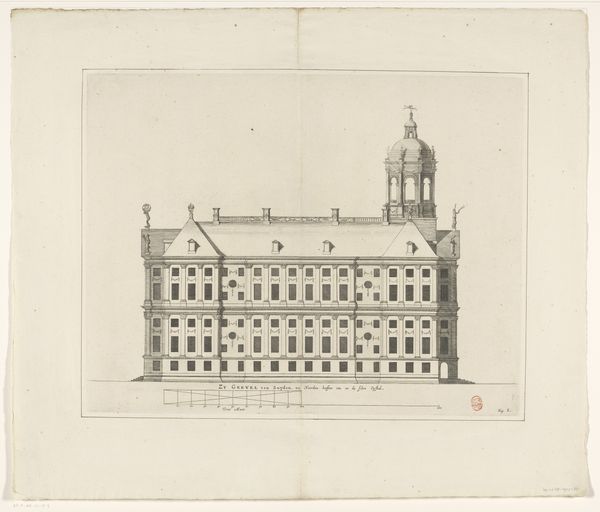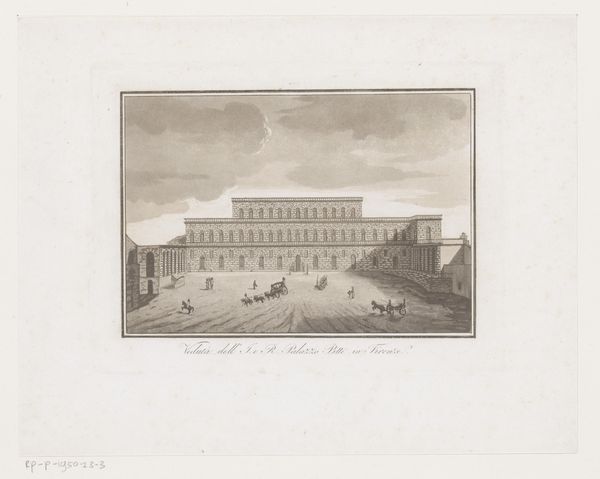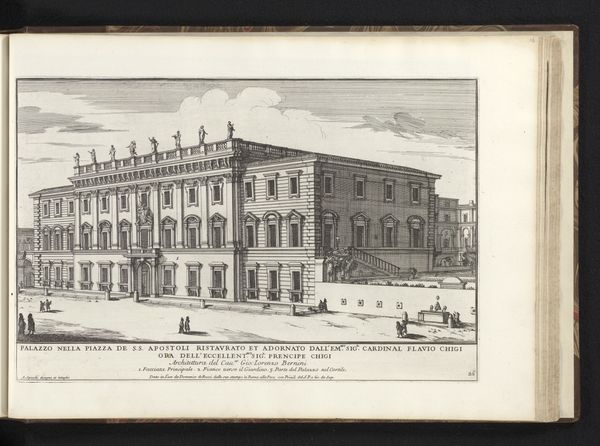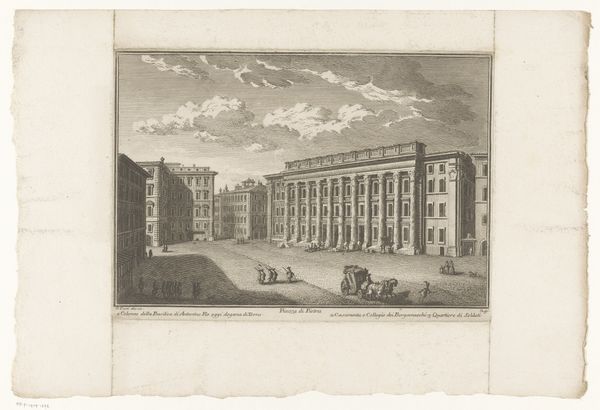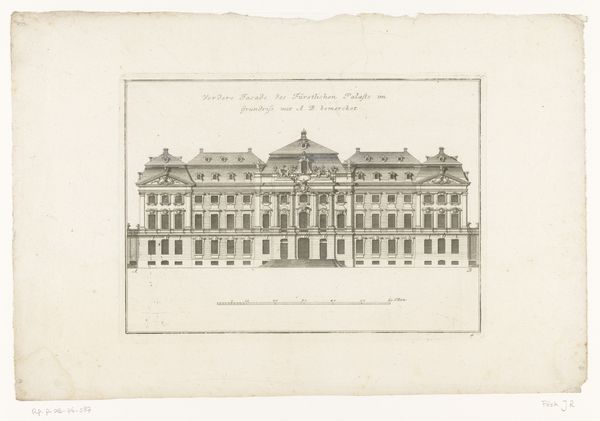
Gezicht op Montagu House in Great Russell Street in Bloomsbury Londen 1720 - 1731
0:00
0:00
suttonnicholls
Rijksmuseum
print, engraving, architecture
#
baroque
# print
#
line
#
cityscape
#
engraving
#
architecture
Dimensions: height 335 mm, width 449 mm
Copyright: Rijks Museum: Open Domain
Editor: This print by Sutton Nicholls, dating from 1720 to 1731, shows Montagu House in London. It's so orderly and symmetrical, almost… oppressive in its perfection. What visual symbols jump out at you when you look at this? Curator: The overwhelming symbol for me is "power," manifested through controlled space. The grid-like arrangement of the courtyard, the imposing facade, and the meticulously placed figures, all speak to a desire for order and control that was emblematic of the Baroque era's elite. The house sits squarely, presenting the pinnacle of authority. What kind of power does this rigid presentation communicate? Editor: Maybe it’s trying to say something about intellect and reason reigning over nature? I guess the perfectly square courtyard would hint at that. Curator: Precisely. Notice the almost militaristic arrangement of elements – the 'troops' of figures lined up, the unwavering gaze of the building itself. It recalls visual displays of power through controlled urban planning seen throughout history, signaling dominion through imposed order. The print isn’t merely documenting architecture; it’s staging a performance of authority. How might a modern audience receive that staging differently from an 18th-century viewer? Editor: Today, maybe we’d see it as ostentatious or even cold. Back then, maybe it was aspirational or reassuring? Curator: It shows a constructed idea of stability and permanence. What's striking is the contrast between the fixed architectural symbol and the ephemeral nature of clouds above; a dialogue between temporal authority and eternal truths. The Baroque period heavily utilizes symbols. This architectural facade stands, a strong statement from the artist through the image itself. Editor: That's fascinating, seeing the symbols of power so clearly laid out. I hadn't really considered how deliberately those elements would have been arranged. Curator: It demonstrates how symbols, particularly in visual form, constantly evolve in meaning across time and cultural contexts.
Comments
No comments
Be the first to comment and join the conversation on the ultimate creative platform.
